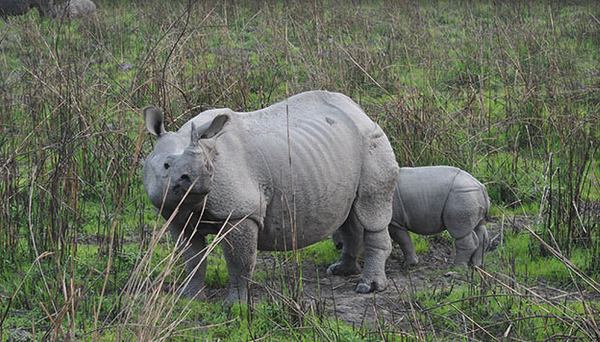Protected areas are those areas which are protected from occupation and exploitation by human through various laws and other means. Protected areas are the basis of ongoing efforts to conserve nature and it’s services. Besides ensuring protection of wildlife and biodiversity, they also help in mitigating the negative effects of climate change. A Protected area network consist of strictly protected areas in which no or very limited use of natural resources are allowed. In this article, we will discuss about Protected Areas of India.
Protected Area:
What is a Protected Area? The most widely accepted definition of protected area was given by the International Union for Conservation of Nature (IUCN). The definition is :
“A protected area is a clearly defined geographical space, recognised, dedicated and managed, through legal or other effective means, to achieve the long term conservation of nature with associated ecosystem services and cultural values. Protected Area Network is a network of different protected areas, created with the goal of conservation of wildlife, biodiversity and ecological balance.”
Protected Area Network in India:
India is home to many endangered species including tiger, Asiatic lion, Asian Elephant, One-horned Rhinoceros, Gangetic River Dolphin, Snow Leopard, Kashmir Stag, Gharial, Lion Tailed Macaque etc. To prevent human exploitation of rare and endangered species and their habitats, it was urgent to create Protected Areas in India. A National Board for Wildlife (NBWL) provides for policy framework for wildlife conservation in India. An apex body under the Wildlife Protection Act, 1972, NBWL frames and monitor policies to safeguard Protected Areas in India. Currently there are 700 protected areas in India.
The Protected Areas in India are constituted and governed under the provisions of the Wild Life (Protection) Act, 1972. This Act is further complemented by other Acts viz. Indian Forest Act, 1927, Forest (Conservation) Act, 1980, Environment (Protection) Act, 1986 and Biological Diversity Act, 2002 and the Scheduled Tribes and Other Traditional Forest Dwellers (Recognition of Forest Rights) Act, 2006. The central government formulates various policies and plans for wildlife conservation. But the actual implementation of those policies and plans are the responsibilities of State Forest Department.
Types of Protected Areas in India:
There are different types of protected areas. Major types of protected areas in India include National Parks, Wildlife Sanctuaries, Conservation Reserves, Community Reserves and Marine Protected Areas.

Wildlife Sanctuary
Wildlife sanctuary is an area of ecological, floral, faunal, geo-morphological, natural or zoological significance. The Sanctuary is declared for the purpose of protecting, propagating or developing wildlife or its environment. Limited rights of people living inside the Sanctuary could be permitted by Chief Wildlife Warden. Removal of wildlife or forest produce or other exploitation in a Sanctuary requires recommendation of the Standing Committee of National Board for Wildlife.
National Park
National Park is an area with adequate ecological, faunal, floral, geo-morphological, natural or zoological significance. Example: Kaziranga National Park of Assam. A National Park is formed with the sole purpose of protection, propagation or development of wildlife and environment. Unlike a Sanctuary, no land rights are allowed in a National Park. No grazing of any livestock shall also be permitted and any removal or exploitation of wildlife or forest produce from a National Park requires recommendation of the National Board for Wildlife.
Conservation Reserves
Conservation Reserves are declared by the State Governments with a goal of protecting landscapes, seascapes, flora and fauna and their habitat. A conservation reserve normally covers areas adjacent to National Parks and Sanctuaries and areas connecting protected areas. State govt. form a conservation reserve only after consultation with local communities. The rights of people living inside the conservation reserve are not affected.
Community Reserves
Community Reserves are declared by State Governments for the purpose of protecting flora, fauna and traditional or cultural values and practices. Such protected areas are form in an areas where an individual or a community has volunteered to conserve wildlife and its habitat. It may cover any private or community land, that are not part of any National Park, Sanctuary or a Conservation Reserve. The rights of people living inside a Community Reserve are not affected.
Marine Protected Areas
Marine Protected Areas are formed by Central Government with an goal of protection of natural or cultural resources located in seas, oceans or large lakes. In a marine protected area, human activities are strictly regulated. There are more than 100 marine protected areas in peninsular and island regions of India.
Transboundary Protected Areas: Protected Areas which overlap boundaries of multiple countries are called Trans-boundary Protected Areas. Example: Sundarbans in India and Bangladesh.
Data on Protected Areas of India:
- National Parks: 103 (40500.13 sq km)
- Wildlife Sanctuaries: 528 (117230.76 sq km)
- Conservation Reserves: 65 (2344.51 sq km)
- Community Reserves: 4 (20.69 sq km)
- Total Protected Areas: 700 (160096.09 sq km)
- Geographical Area of India: 32,87,263 sq km
- Forest Area of India: 692,027 sq km
- Forest Area as % of Geographical Area of India: 21.05 %
(Data upto April, 2015)
Wildlife conservation activities in India are facing a complex combination of ecological and social challenges. Example of challenges include: habitat loss, overuse of biomass resources, human-wildlife conflicts, livelihood dependence on forests resources, poaching and illegal trade, etc. For conservation of India’s diverse wilderness resources those challenges must be addressed efficiently. For that, we need improved co-operation and better coordination amongst the different stakeholders such as government agencies, non-governmental organizations and local civil societies.
